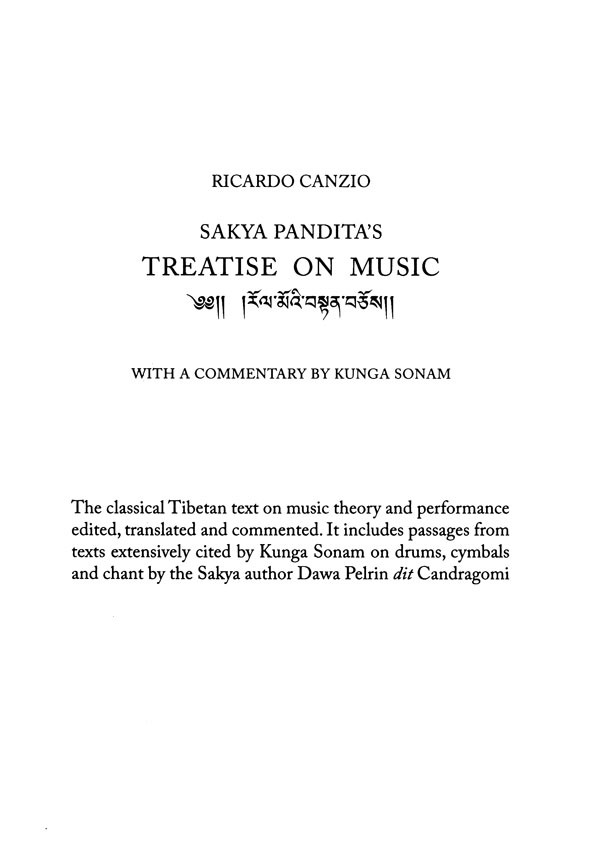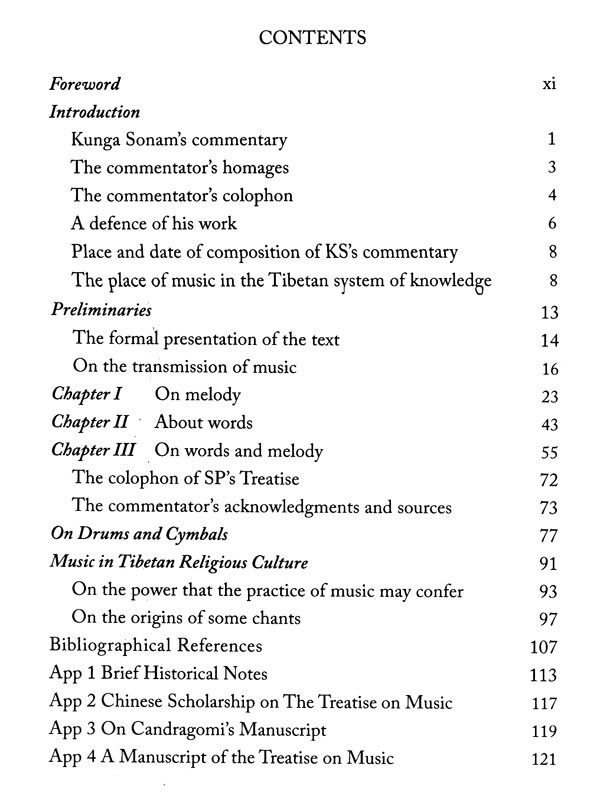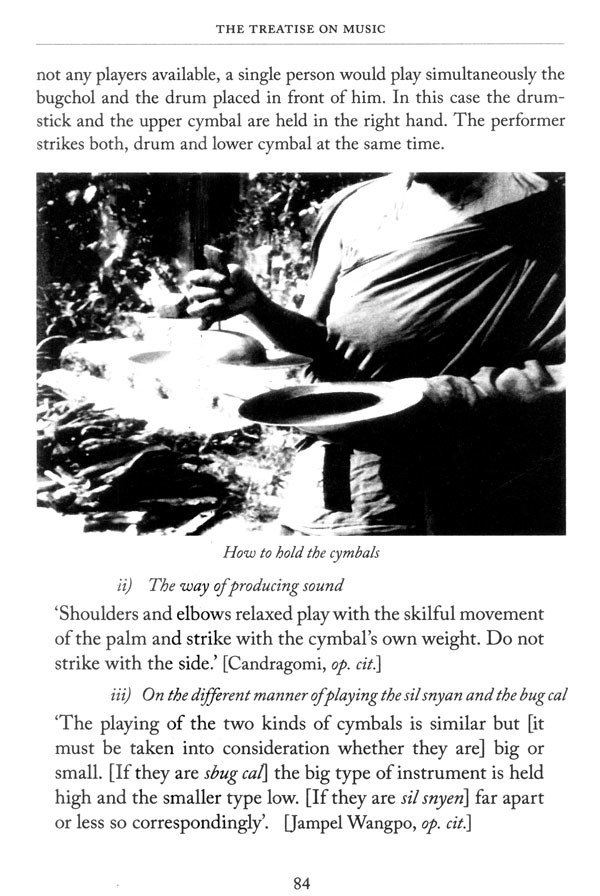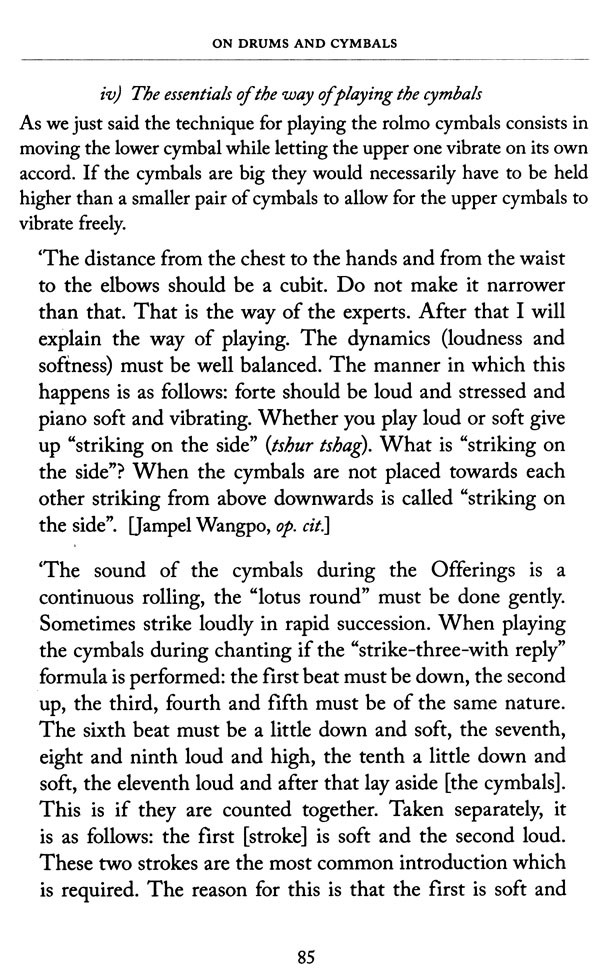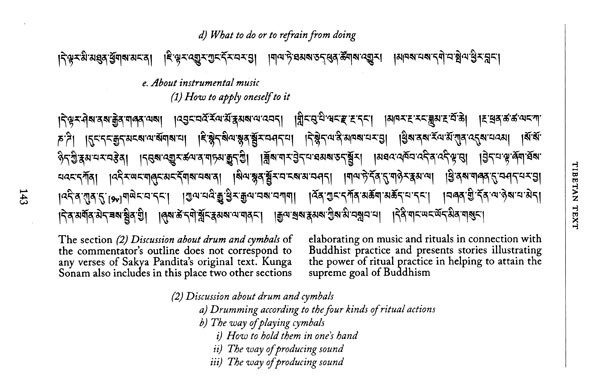
Sakya Pandita's Treatise on Music
Book Specification
| Item Code: | UAO660 |
| Author: | Ricardo Canzio |
| Publisher: | Vajra Books, Nepal |
| Language: | English and Tibetan |
| Edition: | 2019 |
| ISBN: | 9789937733076 |
| Pages: | 162 (Throughout B/w Illustrations) |
| Cover: | PAPERBACK |
| Other Details | 9.00 X 6.00 inch |
| Weight | 280 gm |
Book Description
Ethnomusicologist and Tibetanist Ricardo Canzio has dedicated a lifetime of research to the musical heritage of Tibet-Buddhist and Bon. His landmark translation of the seminal Treatise on Music, composed by the illustrious Sakya Pandita Kunga Gyaltsen (1182 1251), and its long-awaited publication will be well received. This translation is contextualized by the commentary of Kunga Sonam Lhundrub (1571-1642) and quotations from Dawa Pelrin of Zhalu (b. circa 1375), writings on chant, drumming and the playing of cymbals.
The Treatise on Music in its three chapters deals respectively with the four melodic contours of vocal chanting and their combi nations, lyrics and their eulogistic and other functions in compo sition and finally the context of musical performance-the appro priate mental attitude, bodily posture, fundamental defects and causes of failure. Original texts are juxtaposed throughout by Prof. Canzio's insightful remarks, relating the Tibetan notion of melodic contour with the Indian notion of fixed melodic pitch, and com menting on the research of recent Western and Chinese ethnomu sicologists in the study of Tibetan ritual music.
The Treatise on Music without a commentary as it appears in its various editions resisted interpretation. Among the reasons for its incompre hensibility were a number of concepts stemming from Tibetan Gram mar and Poetry used as a metalanguage for musical description and abundant references to questions concerning ritual practices which, because of their very nature, are not written about but transmitted orally. So, when a commentary to Sakya Pandita's Treatise on Music written by Kunga Sonam (kun dga' bsod nams) came to my attention, I saw that it could throw some light on the learned Pandita's text and set the basis of a theory of Tibetan chant.
THE PRESENT state of affairs is something we may go by, we can Isurmise that the Treatise on Music, though highly regarded along with the rest of Sakya Pandita's work, was not read much by Tibetans since we cannot find a surviving tradition of orally trasmitted teachings accompanying the text. Besides most monk musicians do not appear to be very interested in such theoretical explanations as found in the text. In undertaking the translation and interpretation of the Treatise on Music I had to face a number of difficulties. The text proved, in some passages, almost untranslatable and the meaning of many terms and ideas encountered therein were quite unknown to my collaborators. Therefore I have tried, as far as it was possible to follow the oral explanations of those who were expert in other aspects of the liturgy but who did not necessarily know the text in depth.
My comments and notes on the Treatise are based on a detailed exam ination of the text and connected teachings as well as a large amount of oral information collected piecemeal. Shortcomings may be attributed to this translation but nonetheless I hope I have not betrayed the au thor's intentions or the spirit of the work.
**Contents and Sample Pages**
